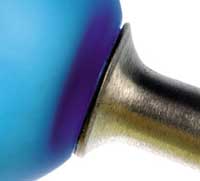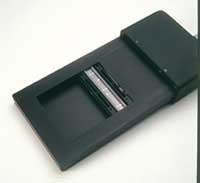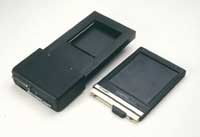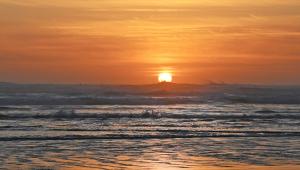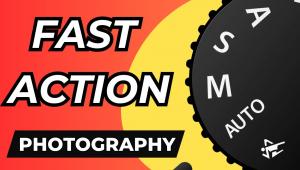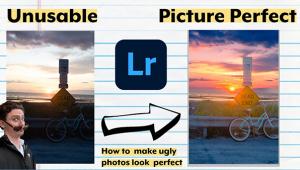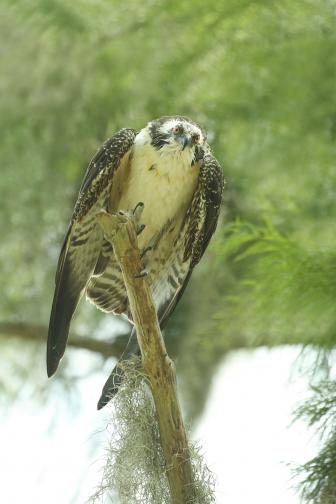The Better Light 6000 Scanning Camera Back
For those of you who think
that digital cameras cannot replace conventional medium and large format
film, get a load of the Better Light 6000 scanning camera back. This
rather expensive pro digital tool not only replaces 4x5 transparency
film for most still life applications, but actually extends a photographer's
creative options. If you've heard of Better Light through the
landscape and scenic work of acclaimed photographer Stephen Johnson,
then you already know that breathtaking results are possible with this
camera back. My goal was to see how it worked for its real purpose--studio
photography. |
|||
While $15,000 for a camera
back is a good chunk of change, the economics of such a device are stunning.
The Better Light 6000 can deliver a 6000x8000 non-interpolated file when
inserted into the back of nearly any garden-variety 4x5 view camera--a
staggering 137.3MB. That's like a 1500dpi drum scan of a 4x5 transparency,
but with no dust, dirt, or scratches. (And it's ready in minutes.)
For those who think a $1000 Nikon CoolPix is "high res" with
its 1600x1200 interpolated pixels, the Better Light is in a whole other
solar system. (One-shot cameras like the CoolPix use a dyed pixel array
which interpolates color.) |
|||
To evaluate the Better Light,
Shutterbug contacted Calumet and arranged for a brand-new Better Light
6000 for review. Calumet sent us the full boat package--the 6000 scanning
back with 6000 pixel trilinear pixel array, the Better Light interface
box with integrated 2GB hard drive, and the Better Light battery pack
and cables to operate the back from an Apple Powerbook. The portability
option is intriguing, but I never could figure out why you would want
to drag one of these into the field. For me, a scanning camera has two
great uses--to document art work and literature and to use for product
photography. |
|||
Once I had the unit powered
up and ready to roll I decided to try a few different lighting sources.
Since flashes or other non-continuous light sources don't work with
a scanning camera, I set up a few inexpensive tungsten lamps. I metered
out the setup and dialed in a line time of 1/60 sec and an aperture of
f/11. To my amazement the Better Light whipped through a full preview
scan in a mind-blowing 8 sec. Not only that, but the preview scan was
actually a nice little 2MB file saved on the hard drive. Imagine shooting
a catalog using nothing but the preview scans--8 sec a pop and ready to
roll to the next product. This may be because the Better Light uses its
own proprietary hard drive, but the speed is really eye opening. |
|||
Now that we have our gray balanced
it's time to apply a curve. Curves, for you Photoshop fans, allow
you to manipulate the image to make the whites look white, the blacks
look black, and everything in between to look normal. There are a few
preset curves already in the software, but custom curves are easy to set
up manually. The advantage of editing the image within the application
is that you are working with full 48-bit data. Applying all of the digital
enhancements within the plug-in will result in a smoother, cleaner file
with less noise in the shadows then saving it as a 24-bit file and editing
it in Photoshop. |
|||
One of the great knocks against
scanning cameras has always been the time required to shoot a picture.
Earlier scanning backs could take five to 10 minutes just to scan one
picture. With the HMI lights I was able to get full resolution scans--137.3MB--in
a remarkable two minutes and 35 sec. Decent scans at 50 percent--34MB--apiece
yielded breakneck one minute and 30 sec scans. This compares very favorably
with three-shot cameras like the Leaf Volare, and even is comparable to
the workflow of good old-fashioned film. (Polaroids take one minute.)
To see what the experience was like with less elaborate lighting, I lit
the same subject with a handful of 1000w tungsten lights. Scan times increased,
but not drastically so. I was able to get f/16 in about two minutes flat
for a 34MB file. Not bad. In my experience this is clearly the world's
fastest scanning camera. The big question--how good was it? |

